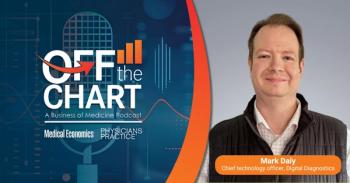
Become Credit Card Savvy
As credit-card processing fees rise, you may be tempted to stop accepting them, but this would be short-sighted. Still, you can be savvy about choosing payment processors and equipment, negotiating rates, and other particulars.
Americans are whipping out their credit and debit cards less during the current recession, according to the Federal Reserve, but don’t tell that to Mike Ripperton, the administrator of Pediatrics DTC in Englewood, Colo.
Ripperton says the percentage of patient payments made with plastic in his practice rose to 57 percent in 2008 from 54 percent in 2007. “It’s an easy way to pay,” he says. “And patients are paying more out of pocket with higher deductibles and copays.”
His experience underlines the importance of being plastic friendly. Patients may forgo restaurant meals and movies they once funded this way, but apparently they’re less likely to stint on healthcare. And plastic is just as easy for medical practices as it is for patients. Unlike checks, cards don’t bounce. You bank the money almost immediately, reducing your accounts receivable. And by accepting cards in the office - over the phone and online - you avoid having to mail out statements, which costs time and money.
FIND OUT MORE
Each swipe comes with a darn processing fee, and more recession-minded doctors are apparently trying to dodge this cost by not accepting plastic, according to SK&A Information Services. It reports that the percentage of physician offices processing credit and debit cards dropped from 72 percent in April 2008 to 67 percent in January 2009. However, Atlanta-based practice-management consultant Elizabeth Woodcock says turning down cards is a shortsighted strategy, given how their financial benefits outweigh the fees. “Have you ever heard of the expression ‘The check is in the mail?’” she asks. “Ha, ha.”
Accepting cards, then, is the correct farsighted strategy, but it goes beyond sliding those cards through a terminal. We’ve interviewed physicians, practice administrators, and various financial types for advice on choosing a company to process your payments, negotiating a rate, and choosing your equipment. In short, playing your cards right.
Anatomy of a rate
The cost of swiping a card - called the discount rate - typically ranges between 1.5 percent and 3 percent of the transaction, plus a flat, per-transaction fee of 5 cents or more. This discount rate jumps up 25 basis points or more when the card number is keyed in for a mail order, online, or telephone transaction, says consultant Michael Shatz, founder of a company called The Merchants Guide that helps businesses lower their card-processing costs. “Reward” cards that give the owner points, miles, or dollars back also jack up the rate. It’s possible to negotiate your rate downward and save several thousand dollars a year, but to do that you must first understand the Byzantine world of credit-card processing.
Consider the bewildering cast of characters involved when you swipe a patient’s MasterCard or Visa card. First, there’s the bank that issued the card. Then there’s the “acquiring” bank that accepts payment from the issuing bank and forwards the money to you. Businesses often establish their so-called merchant account for card processing with an acquiring bank, but this bank usually delegates card processing to a third-party such as First Data or TSYS. In other scenarios, you establish a merchant account directly with the card processor or a middleman (they’ll need to partner with an acquiring bank to complete the loop). Connecting all these parties electronically is the Visa/MasterCard network, created by the banking industry. Cards from the American Express and Discover networks go through similar channels, except that these networks issue their own cards.
Every player gets a cut of the discount rate you pay. In a Visa or MasterCard swipe, the biggest portion is the interchange fee, which the acquiring bank pays the issuing bank. The card network collects an assessment fee, and the merchant account provider and its partners take their share, which typically represents 10 percent to 30 percent of your total cost, says Shatz.
It’s impossible for you to negotiate a lower interchange fee, unless Congress passes a bill introduced last year that would allow businesses to collectively bargain with Visa and MasterCard. Retailers have accused the card giants in numerous lawsuits of working with member banks to set excessive interchange fees. Visa and MasterCard counter that the charges are fair, and conducive to a competitive, flourishing card-payment system.
Likewise, the assessment fee paid to Visa and MasterCard is currently non-negotiable. What you can jawbone is the share of the discount fee owed to the merchant account provider as well as the extra charges that this company tacks on, says Shatz. These charges might include annual and monthly fees, set-up fees, statement fees, batch fees, and address-verification fees.
Getting a good deal
So let’s say you’re paying between 2 percent and 3 percent per swipe. One negotiating gambit is calling your merchant account provider and saying, “I’m considering switching to somebody else; can you give me a better rate?” says Woodcock. “There’s a good likelihood one phone call will do the trick.” If you can persuade them to identify the negotiable parts of the rate, you’re in a position of strength. Did you set up your merchant account at the bank where you have a checking account and a lockbox for insurance checks? You’ll enjoy additional clout then, says Woodcock. “Believe me, banks want your business these days.”
A variation of this “I may leave” gambit is asking your merchant account provider to beat a competitor’s rate. Costco Wholesale, for example, offers card processing for 1.64 percent plus 20 cents per transaction, which Shatz calls a good deal for doctors.
The American Medical Association has negotiated an even better rate for its members with First National Merchant Solutions, a card processor owned by First National Bank of Omaha. AMA members pay only 1.63 percent plus a nickel per swipe for MasterCard and Visa transactions, says First National account manager Randy Phelps. “I’ve used them for 10 years, and nobody has been able to match their rates,” says Jill Stoller, practice administrator of Chestnut Ridge Pediatric Associates in Woodcliff Lake, N.J.
Merchant account providers that have negotiated preferred rates with professional associations tend to be good choices, notes Shatz. It’s all about leverage. “You have recourse if you’re unhappy with the company - you can complain to the association,” he says.
Hardware made easy
Your merchant account provider can recommend a credit-card terminal to deploy at your front desk. The provider may offer to lease you one at $30 or so a month, but you’ll save money in the long run if you buy it. Basic terminals with a built-in printer from leading brands VeriFone and Hypercom cost between $200 and $400. You may be able to save money buying one on the Internet rather than from a merchant account provider, although some providers give away machines to drum up business. If you buy one yourself, you’ll need to download the necessary software from your merchant account provider, but that’s a snap, says Phelps.
Phelps recommends that doctors have their terminals programmed to swipe debit cards with PIN entry. True, debit cards can be processed without the PIN in what resembles a credit-card transaction; the patient swipes the card and signs a receipt, with the usual discount rate kicking in. However, if the patient enters his PIN, a flat rate applies, often under a dollar per transaction. And at the level of a $20 copay, this flat rate may exceed the discount rate. But depending on the two rates, there’s a dollar threshold where PIN entry saves you money.
Let’s say the flat rate for PIN entry is 75 cents. Your cost of swiping a debit card at First National’s discount rate for $20 comes to 38 cents ($20 times .0163 plus 5 cents), roughly half of the flat rate. But make that a $500 transaction, and the discount rate now dings you for $8.20 compared to 75 cents for PIN entry. Phelps says doctors’ offices ought to remind debit-card holders of the PIN option when balances are large enough to make the flat rate advantageous.
Terminals typically come with a built-in PIN pad, but this creates a problem if the machine normally faces a staffer at the front desk - she’d need to turn it around so the patient can punch in the number. To avoid that hassle, plug in a separate PIN pad - available for $100 or so - that always faces the patient.
A busy front desk may need more than one terminal. Pediatrics DTC fields two machines up front as well as another in the billing office so staffers can take credit-card numbers over the phone or off returned billing statements and then key them in.
Card terminals connect to either a standard phone line or a high-speed DSL line. If you choose a standard phone line, make it a dedicated one, so that credit-card processing doesn’t interfere with faxes and voice conversations, or vice versa. A DSL line, in contrast, carries card transactions and other data simultaneously.
You can dispense with a card terminal by equipping an Internet-enabled computer with a simple “wedge” card reader and installing card-processing software like PC Charge or AnyCard. With the software costing $100 to $200 and the wedge under $100, this set-up can be less expensive than a traditional terminal, and handy for back offices taking card payments over the phone. Check with your merchant account provider for software recommendations.
Making everything connect
Some large group practices with bigger IT budgets have supersized their card processing by installing kiosks in the waiting room. Such kiosks automate check-in and allow patients to swipe cards for a copay or past-due balance. One advantage kiosks hold over a standard card terminal is that they usually integrate with practice-management software, eliminating the need to post payments manually.
Credit-card processing has moved beyond office-bound hardware to practice Web sites. Some doctors incorporate PayPal or online payment tools from merchant account providers. Your best bet, however, may be physician connectivity companies such as Medfusion, RelayHealth, and Medem that include online payment on the interactive Web sites they create for physicians. You come out ahead because, like the kiosks, their software increasingly dovetails with the software in your office. With Medfusion, for example, online credit-card payments can queue up in your practice-management system for you to review and post.
Why can’t the card terminal at your front desk do that? Well, it eventually may, says Phelps, as the healthcare industry moves toward real-time claims adjudication at the point of service. Phelps is talking with practice-management software vendors about how to connect their systems to stand-alone card terminals as well as PCs loaded with card-processing software. It’s one more sign that credit and debit cards have gone from being a sideshow in patient collections to the main event, helping to fulfill prophecies of a cashless society - and a cashless office.
Robert Lowes is an award-winning journalist based in St. Louis who has covered the healthcare industry for 20 years. He can be reached via
This article originally appeared in the April 2009 issue of Physicians Practice.
Each swipe comes with a darn processing fee, and more recession-minded doctors are apparently trying to dodge this cost by not accepting plastic, according to SK&A Information Services. It reports that the percentage of physician offices processing credit and debit cards dropped from 72 percent in April 2008 to 67 percent in January 2009. However, Atlanta-based practice-management consultant Elizabeth Woodcock says turning down cards is a shortsighted strategy, given how their financial benefits outweigh the fees. “Have you ever heard of the expression ‘The check is in the mail?’” she asks. “Ha, ha.” Accepting cards, then, is the correct farsighted strategy, but it goes beyond sliding those cards through a terminal. We’ve interviewed physicians, practice administrators, and various financial types for advice on choosing a company to process your payments, negotiating a rate, and choosing your equipment. In short, playing your cards right. The cost of swiping a card - called the discount rate - typically ranges between 1.5 percent and 3 percent of the transaction, plus a flat, per-transaction fee of 5 cents or more. This discount rate jumps up 25 basis points or more when the card number is keyed in for a mail order, online, or telephone transaction, says consultant Michael Shatz, founder of a company called The Merchants Guide that helps businesses lower their card-processing costs. “Reward” cards that give the owner points, miles, or dollars back also jack up the rate. It’s possible to negotiate your rate downward and save several thousand dollars a year, but to do that you must first understand the Byzantine world of credit-card processing. Consider the bewildering cast of characters involved when you swipe a patient’s MasterCard or Visa card. First, there’s the bank that issued the card. Then there’s the “acquiring” bank that accepts payment from the issuing bank and forwards the money to you. Businesses often establish their so-called merchant account for card processing with an acquiring bank, but this bank usually delegates card processing to a third-party such as First Data or TSYS. In other scenarios, you establish a merchant account directly with the card processor or a middleman (they’ll need to partner with an acquiring bank to complete the loop). Connecting all these parties electronically is the Visa/MasterCard network, created by the banking industry. Cards from the American Express and Discover networks go through similar channels, except that these networks issue their own cards. Every player gets a cut of the discount rate you pay. In a Visa or MasterCard swipe, the biggest portion is the interchange fee, which the acquiring bank pays the issuing bank. The card network collects an assessment fee, and the merchant account provider and its partners take their share, which typically represents 10 percent to 30 percent of your total cost, says Shatz. It’s impossible for you to negotiate a lower interchange fee, unless Congress passes a bill introduced last year that would allow businesses to collectively bargain with Visa and MasterCard. Retailers have accused the card giants in numerous lawsuits of working with member banks to set excessive interchange fees. Visa and MasterCard counter that the charges are fair, and conducive to a competitive, flourishing card-payment system. Likewise, the assessment fee paid to Visa and MasterCard is currently non-negotiable. What you can jawbone is the share of the discount fee owed to the merchant account provider as well as the extra charges that this company tacks on, says Shatz. These charges might include annual and monthly fees, set-up fees, statement fees, batch fees, and address-verification fees. So let’s say you’re paying between 2 percent and 3 percent per swipe. One negotiating gambit is calling your merchant account provider and saying, “I’m considering switching to somebody else; can you give me a better rate?” says Woodcock. “There’s a good likelihood one phone call will do the trick.” If you can persuade them to identify the negotiable parts of the rate, you’re in a position of strength. Did you set up your merchant account at the bank where you have a checking account and a lockbox for insurance checks? You’ll enjoy additional clout then, says Woodcock. “Believe me, banks want your business these days.” A variation of this “I may leave” gambit is asking your merchant account provider to beat a competitor’s rate. Costco Wholesale, for example, offers card processing for 1.64 percent plus 20 cents per transaction, which Shatz calls a good deal for doctors. The American Medical Association has negotiated an even better rate for its members with First National Merchant Solutions, a card processor owned by First National Bank of Omaha. AMA members pay only 1.63 percent plus a nickel per swipe for MasterCard and Visa transactions, says First National account manager Randy Phelps. “I’ve used them for 10 years, and nobody has been able to match their rates,” says Jill Stoller, practice administrator of Chestnut Ridge Pediatric Associates in Woodcliff Lake, N.J. Merchant account providers that have negotiated preferred rates with professional associations tend to be good choices, notes Shatz. It’s all about leverage. “You have recourse if you’re unhappy with the company - you can complain to the association,” he says. Your merchant account provider can recommend a credit-card terminal to deploy at your front desk. The provider may offer to lease you one at $30 or so a month, but you’ll save money in the long run if you buy it. Basic terminals with a built-in printer from leading brands VeriFone and Hypercom cost between $200 and $400. You may be able to save money buying one on the Internet rather than from a merchant account provider, although some providers give away machines to drum up business. If you buy one yourself, you’ll need to download the necessary software from your merchant account provider, but that’s a snap, says Phelps. Phelps recommends that doctors have their terminals programmed to swipe debit cards with PIN entry. True, debit cards can be processed without the PIN in what resembles a credit-card transaction; the patient swipes the card and signs a receipt, with the usual discount rate kicking in. However, if the patient enters his PIN, a flat rate applies, often under a dollar per transaction. And at the level of a $20 copay, this flat rate may exceed the discount rate. But depending on the two rates, there’s a dollar threshold where PIN entry saves you money.
Let’s say the flat rate for PIN entry is 75 cents. Your cost of swiping a debit card at First National’s discount rate for $20 comes to 38 cents ($20 times .0163 plus 5 cents), roughly half of the flat rate. But make that a $500 transaction, and the discount rate now dings you for $8.20 compared to 75 cents for PIN entry. Phelps says doctors’ offices ought to remind debit-card holders of the PIN option when balances are large enough to make the flat rate advantageous. Terminals typically come with a built-in PIN pad, but this creates a problem if the machine normally faces a staffer at the front desk - she’d need to turn it around so the patient can punch in the number. To avoid that hassle, plug in a separate PIN pad - available for $100 or so - that always faces the patient. A busy front desk may need more than one terminal. Pediatrics DTC fields two machines up front as well as another in the billing office so staffers can take credit-card numbers over the phone or off returned billing statements and then key them in. Card terminals connect to either a standard phone line or a high-speed DSL line. If you choose a standard phone line, make it a dedicated one, so that credit-card processing doesn’t interfere with faxes and voice conversations, or vice versa. A DSL line, in contrast, carries card transactions and other data simultaneously. You can dispense with a card terminal by equipping an Internet-enabled computer with a simple “wedge” card reader and installing card-processing software like PC Charge or AnyCard. With the software costing $100 to $200 and the wedge under $100, this set-up can be less expensive than a traditional terminal, and handy for back offices taking card payments over the phone. Check with your merchant account provider for software recommendations. Some large group practices with bigger IT budgets have supersized their card processing by installing kiosks in the waiting room. Such kiosks automate check-in and allow patients to swipe cards for a copay or past-due balance. One advantage kiosks hold over a standard card terminal is that they usually integrate with practice-management software, eliminating the need to post payments manually. Credit-card processing has moved beyond office-bound hardware to practice Web sites. Some doctors incorporate PayPal or online payment tools from merchant account providers. Your best bet, however, may be physician connectivity companies such as Medfusion, RelayHealth, and Medem that include online payment on the interactive Web sites they create for physicians. You come out ahead because, like the kiosks, their software increasingly dovetails with the software in your office. With Medfusion, for example, online credit-card payments can queue up in your practice-management system for you to review and post. Why can’t the card terminal at your front desk do that? Well, it eventually may, says Phelps, as the healthcare industry moves toward real-time claims adjudication at the point of service. Phelps is talking with practice-management software vendors about how to connect their systems to stand-alone card terminals as well as PCs loaded with card-processing software. It’s one more sign that credit and debit cards have gone from being a sideshow in patient collections to the main event, helping to fulfill prophecies of a cashless society - and a cashless office. Robert Lowes Physicians Practice.
Newsletter
Optimize your practice with the Physicians Practice newsletter, offering management pearls, leadership tips, and business strategies tailored for practice administrators and physicians of any specialty.








